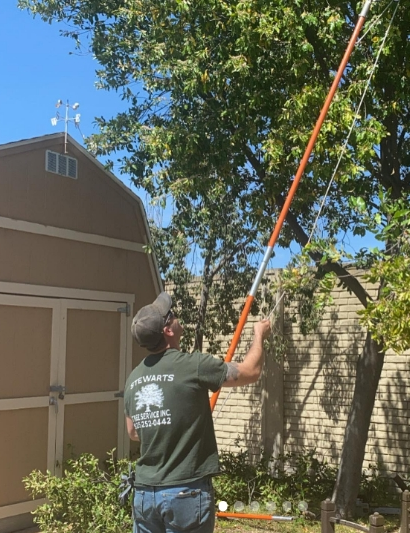Structural pruning is the removal of live branches and stems to influence the orientation, spacing, growth rate, strength of attachment, and ultimate size of branches and stems. If young trees are pruned to promote good structure they likely will remain serviceable in the landscape for more years that trees that have not been structurally pruned. Structural pruning of large-maturing trees such as maples, eucalyptus and oaks reduces certain defects and spaces main branches along one dominant trunk.


Restoration (remedial pruning) is the selective removal of branches, sprouts, and stubs from trees and shrubs that have been topped, vandalized, broken in a storm or otherwise damaged. The goal of restoration is to improve a tree or shrub’s structure, form, or appearance.
The best time to prune live branches depends on the desired results. Removal of dying, diseased, broken, rubbing, or dead limbs can be accomplished any time, with little negative effect on the tree.
The timing of pruning can be an important part of plant health care. Pruning Pine trees in fall through spring minimize the risk of pest problems.
Flowering can be prevented or enhanced by pruning at the appropriate time of the year. To retain the most flowers prune trees in the winter or in the summer just after bloom.
Fruit trees pruned in the dormant season will enhance structure and distribute fruiting wood. Pruning after blooming to thin fruit.

The text for the pruning section has been adapted from “Best Management Practices: Tree Pruning” 2008, International Society of Arboriculture. Edward F. Gilman, Ph.D. Sharon J. Lilly